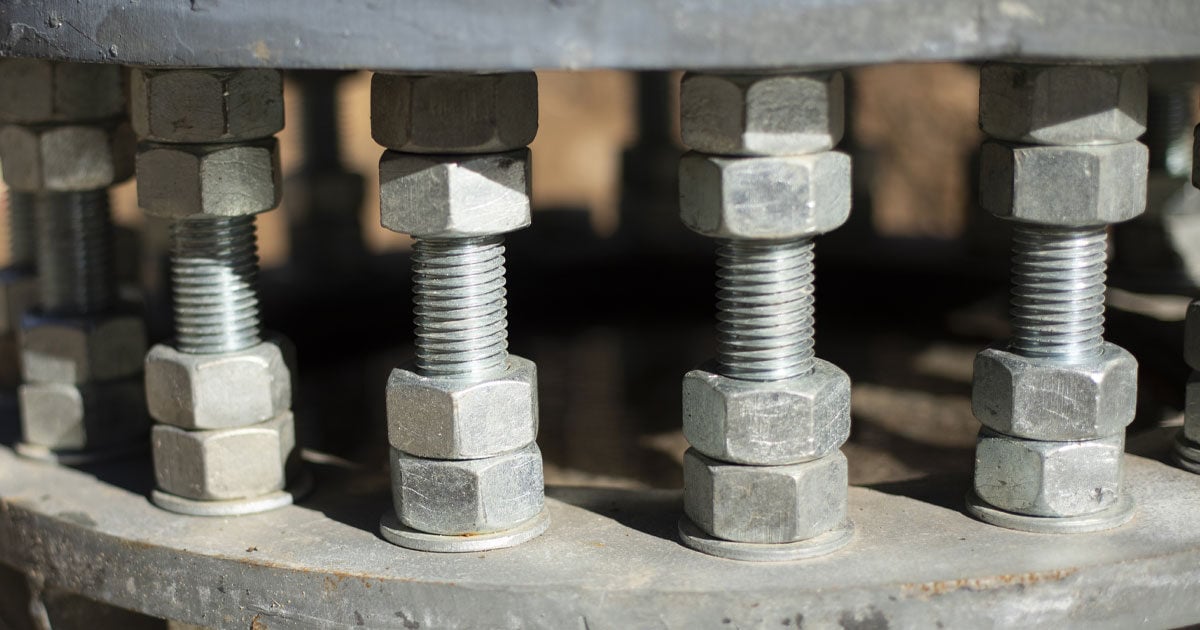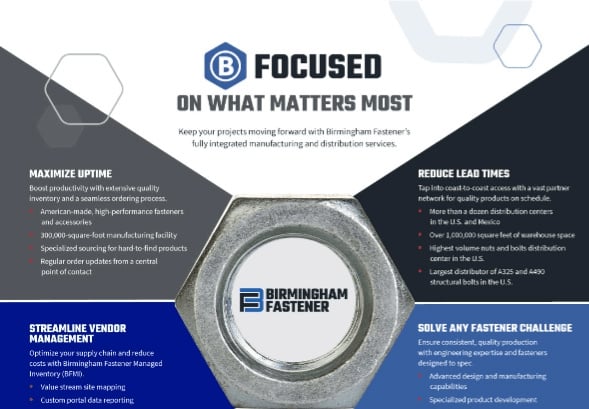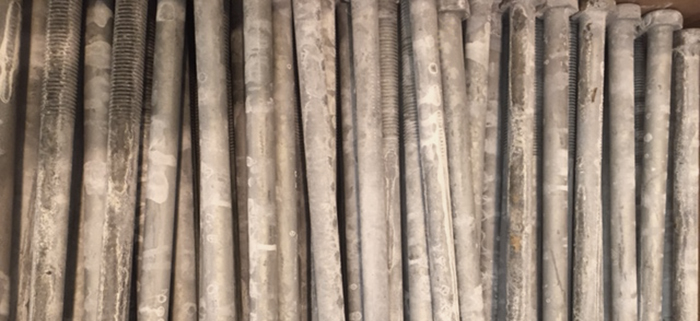Structural Bolts: Evaluating Galvanized vs. Non-Galvanized

The choice between galvanized and non-galvanized structural bolts can significantly impact the long-term performance and durability of your project. Each option has advantages and drawbacks, so you’ll want to evaluate them carefully.
Galvanizing is a tried-and-true method of fastener finishing to protect steel products from corrosion. For over 100 years it’s remained a popular structural bolt coating choice for long-term rust resistance in corrosive environments.
But galvanizing isn’t always the right solution for steel bolts. It comes with additional costs and time that need to be considered against the benefits that galvanization provides.
No article on this topic can give you a one-size-fits-all answer to using galvanized or non-galvanized structural bolts, but this blog will provide an overview of the pros and cons of each approach to help steer you in the best direction.
What Is Galvanization?
Galvanization is a process where a layer of zinc is applied to steel to protect it from rust. Think of it like putting on a protective coat for the steel. Galvanized steel is often used on outdoor light fixtures, utility poles and highway signs, especially in marine environments with exposure to moisture and salt.
Common methods of galvanization include:
- Hot-dip galvanizing (HDG): The most used galvanizing process for structural fasteners, HDG involves dipping steel into a bath of molten zinc that adheres to the steel surface to form a protective coating. It’s a fairly simple process but must be done in a galvanizing facility.
- Mechanical galvanizing: Also called mechanical plating, this process uses glass beads and tumbling to apply a zinc coating to parts. It’s commonly used on fasteners that aren’t suitable for hot-dip galvanizing and provides a cleaner, neater finish. However, the coating is slightly less corrosion resistant compared to hot-dip galvanizing.
- Zinc plating: Also known as electro-galvanizing, it involves immersing the metal substrate in a solution containing zinc ions and passing an electric current through the solution. The zinc ions are attracted to the substrate and deposit onto its surface, forming a protective coating.
Benefits of Using Galvanized Structural Bolts
Galvanization is a time-tested method that’s still widely used today throughout the structural steel industry. Galvanized bolts offer key benefits such as:
- Reliable rust protection: The metallurgically bonded zinc coating provides corrosion and wear resistance to steel products. This barrier prevents moisture and oxygen – the primary factors that cause rust – from reaching the steel.
- Low maintenance: Galvanized bolts require minimal maintenance compared to non-galvanized bolts, which may need to be repainted or replaced more frequently.
- Versatility: Available in a wide range of sizes, strengths and finishes, galvanized bolts are suitable for a variety of applications.
Disadvantages of Using Galvanized Structural Bolts
For all the advantages that galvanized bolts deliver, they come with drawbacks including:
- Added costs: Plan on higher initial costs compared to non-galvanized bolts as you’ll need to factor the price of zinc and the galvanizing service.
- Transportation time: While the galvanizing process can be quick, the parts then need to be repacked and shipped to you, so keep that in mind if you have tight project turnaround times.
- Over-tapping the nut: Since the galvanizing process makes the steel slightly thicker, the nuts are tapped oversize to accommodate the increase in bolt diameter. A rotational capacity test is required for hot-dip galvanized bolts.
Due to the risk of hydrogen embrittlement, not all bolts can be galvanized – this includes F3125 Grade A490 fasteners. In such cases, you can use a zinc/aluminum corrosion protective coating that’s sprayed on or dip spun.
Weighing the Pros and Cons of Galvanizing
Galvanizing can be a great way to protect steel from corrosion and ensure durability of the bolt. However, you should consider the finished product and its environment before going that route so you make the best long-term decision.
Have questions about whether galvanizing makes sense for your project? Contact our team to talk about options for protecting your parts.

The Power of Finding the Right Partner

Focus on What
Matters Most
Related Posts

Can I Put a Hot-Dip Galvanized Nut on a Mechanical Galvanized Bolt?

White Rust Prevention on Structural Bolting Components




